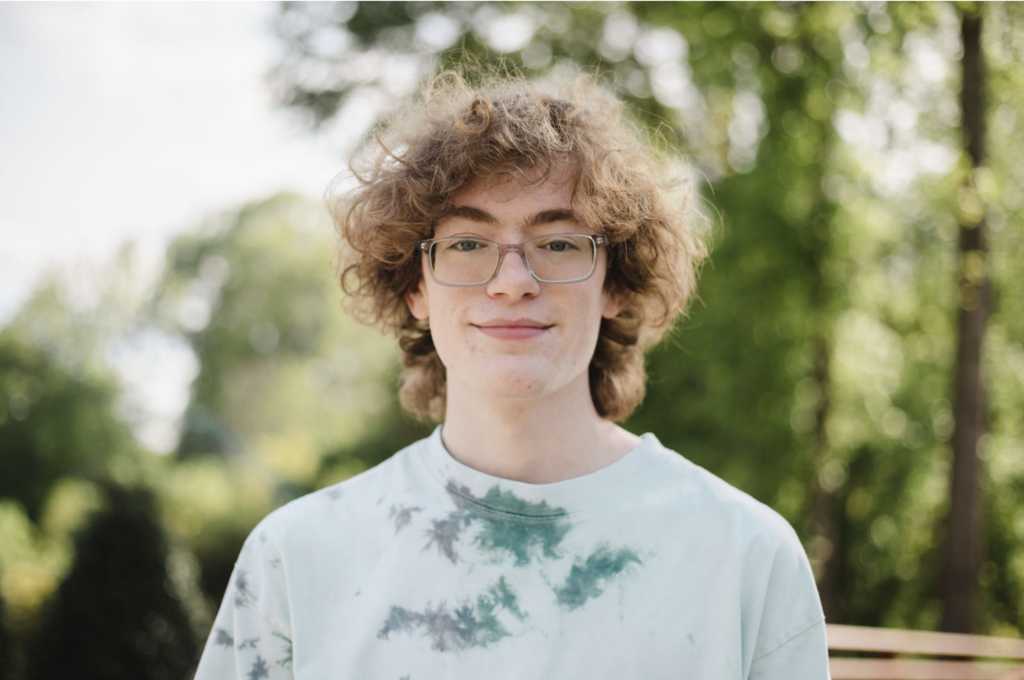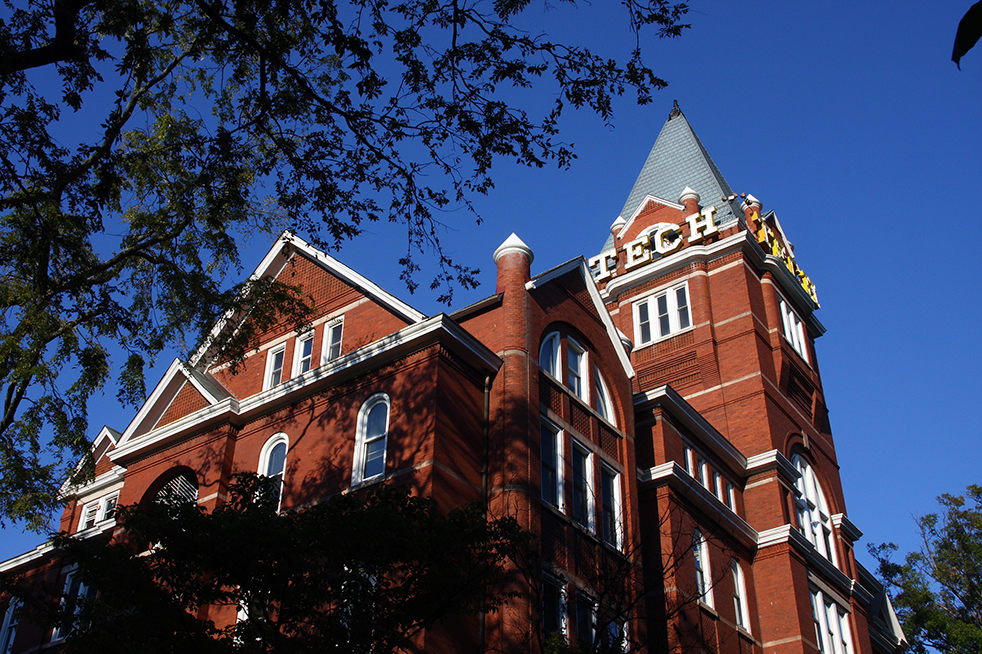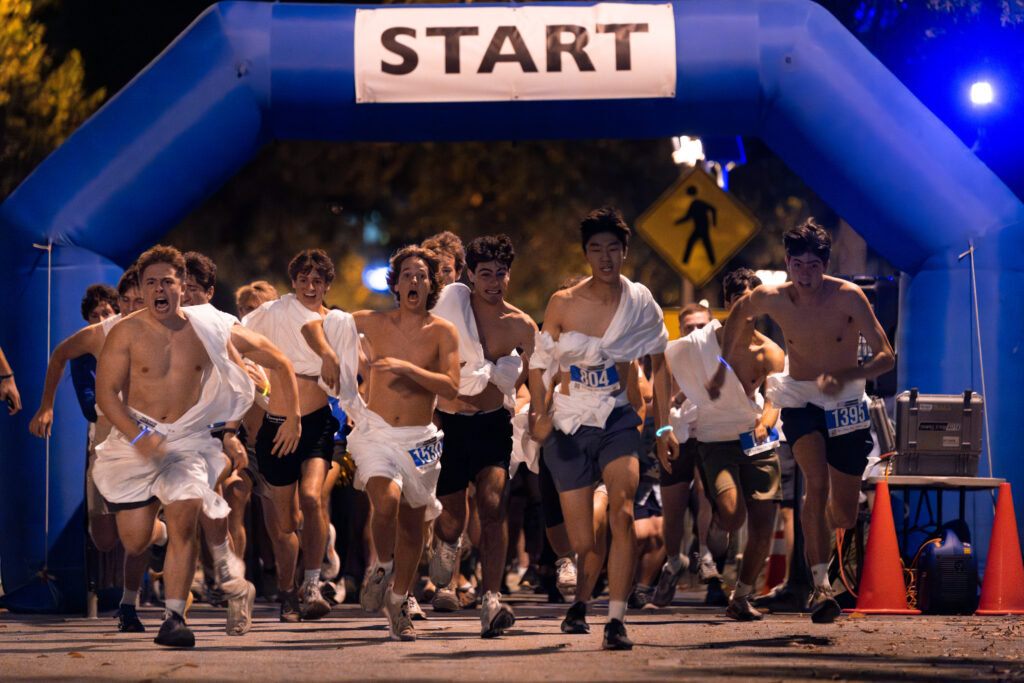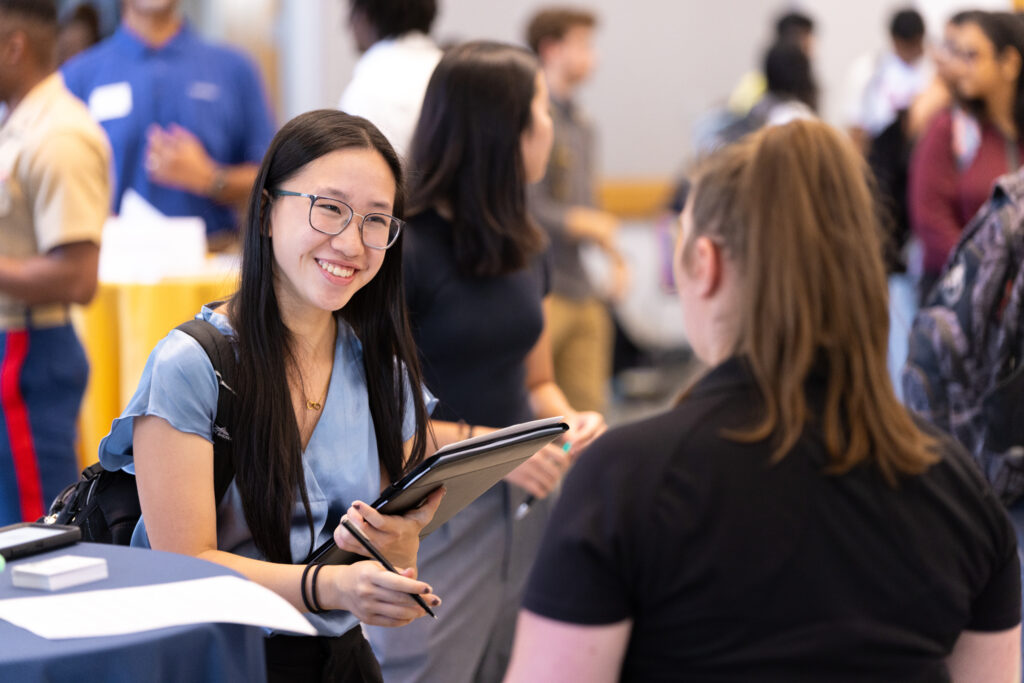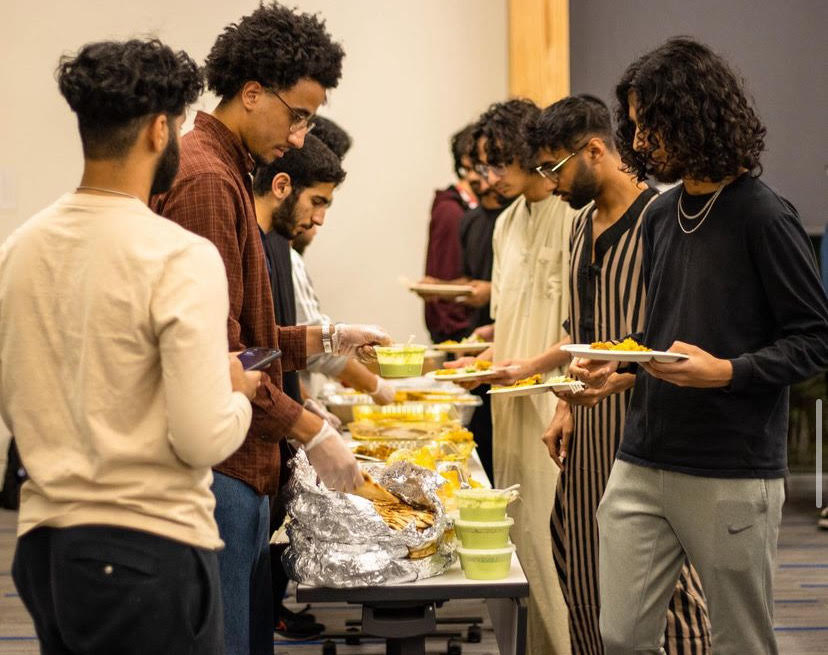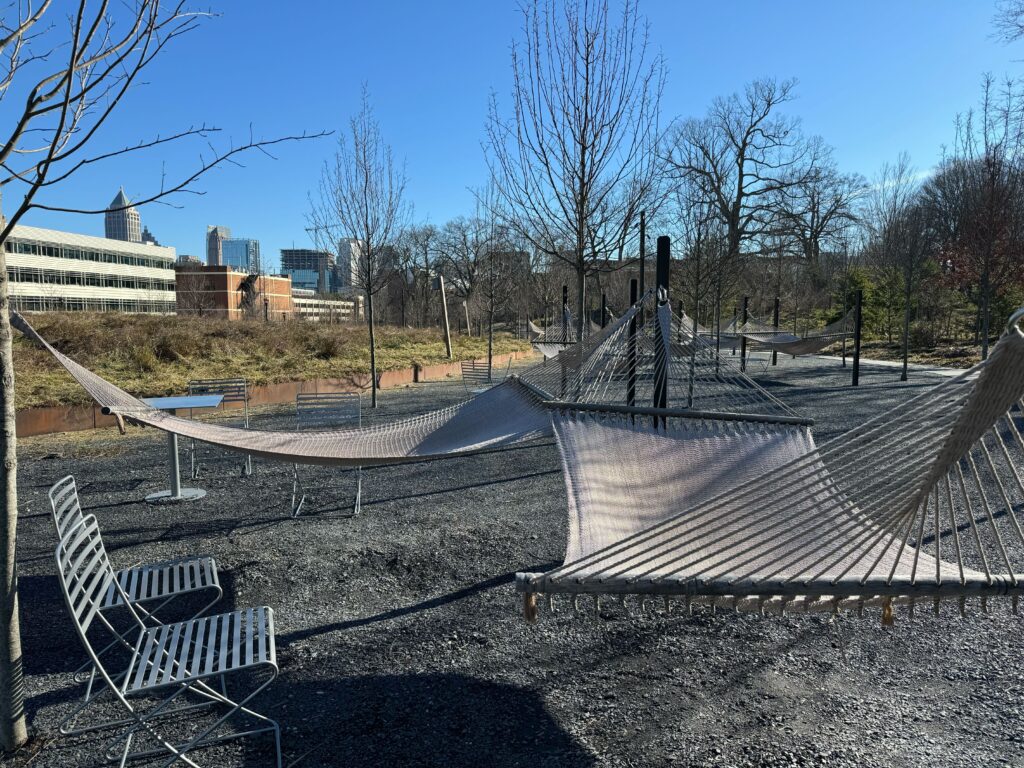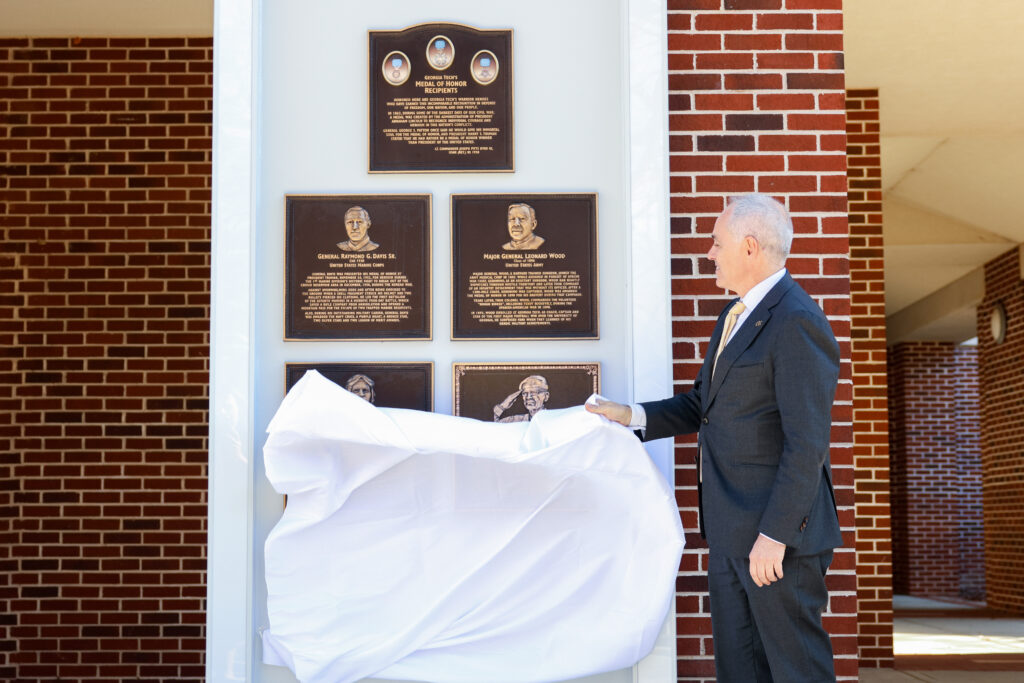Posted on 18 February 2025.
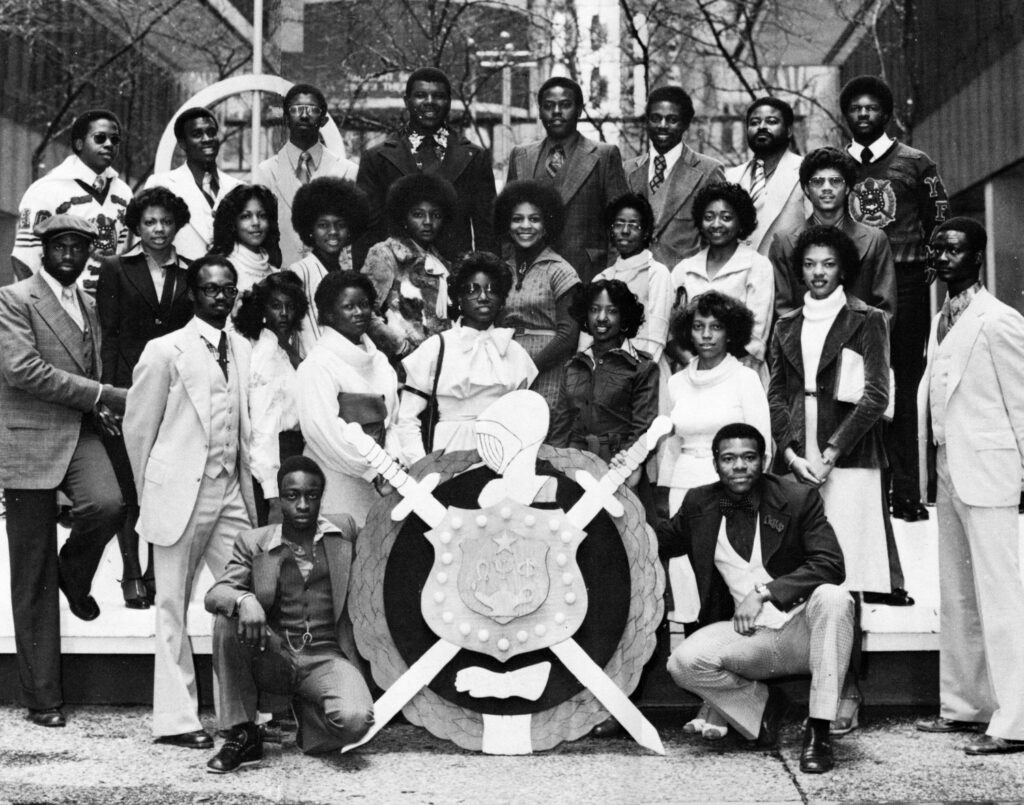
Every year during Black History Month, the Technique sits down with a small group of students who are members of one of the National Pan-Hellenic Council fraternities and sororities to get their views on current events and inclusion at the Institute. This year, the Technique’s conversation with Divine Nine representatives focused on the Institute’s recent decision to discreetly remove websites that contain references to diversity, equity and inclusion (DEI). The issues of DEI discussion and funding strike home for many of the students the Technique spoke with since many of the students in Divine Nine organizations directly benefit from the resources and spaces provided by DEI initiatives.
Six students participated in this year’s interview, including David Anderson Jr., fourth-year BCHM of Omega Psi Phi Fraternity, Inc., Cole Brown, fourth-year HIST of Alpha Phi Alpha Fraternity, Inc., Kelley Collier, fourth-year CS of Kappa Alpha Psi Fraternity, Inc., Mayenie Conton, fourth-year LMC of Zeta Phi Beta Sorority, Inc., Quincy Howard, fourth-year ISyE Alpha Phi Alpha Fraternity, Inc. and Suraya John, fourth-year AE of Sigma Gamma Rho Sorority, Inc. Parker Avery and Madison Winston from the Technique moderated.
What does it mean to you to be a member of a Divine Nine sorority or fraternity?
Howard: For me, there is definitely a historical and traditional aspect of being in a Divine Nine fraternity. Both of my parents were involved in Divine Nine Greek life, so growing up around them and having an understanding of some of the values and ideals that they hold, … whether it was seeing my mom doing community service [and] growing up and being a part of the sisterhood that she had in her organization, or some of the achievements my dad has had because of his Divine Nine fraternity. I think for me it is about my parents and that traditional aspect that introduced me to Greek Life. In terms of being a student on campus now, I would say it’s very resourceful to have people who think like you, peers who are similar-minded whom you can count on or lean on for anything academically, socially or mentally.
Brown: I definitely echo a lot of the same things. Really, why I joined not just the specific fraternity but also this specific chapter was really that service-leadership brotherhood. Being able to see individuals on campus that I really felt were making an impact that went beyond themselves. What I saw coming into college following 2021 was that even during COVID with all that going on, [my fraternity] was still willing to commit to service; they were willing to serve others. Also, with leadership, people want to be a leader, not just for the position, not for the title, but for the people that they serve.
Conton: I grew up outside of the United States, so I didn’t have any clue about the Divine Nine until I came to campus and some of the greatest and sweetest people I’ve met were members of my sorority. I also came from a largely Black society to a predominantly white institution, so being able to find the Divine Nine and seeing where groups of Black people not only got together but were forming bonds, thriving and becoming leaders was really important to me.
John: For me, joining my Divine Nine organization is a lifetime commitment to fulfilling my purpose in life and becoming the woman that I want to be for the rest of my life. I get to see my other sisters also go through the same journey. We look up to each other, we uplift each other, and we help support each other in fulfilling our hopes, dreams and main goals of dedicating our lives to service, being mentors to other women and building a community based off of the drive to just truly be a better woman for your community, for your families, and for the people around you.
What does the decision to remove DEI websites and language mean to the Black community at Tech?
Howard: I’m from Dublin, Georgia, which is more of a rural area. I would say researching resources online was a big part of figuring out whether I was going to go to Tech or not. I just feel like as a student or a senior in high school, those are definitely things that I would be on the lookout for from a resource standpoint. That was one of my priorities going into college; I wanted to make sure I had the resources I would need to succeed. When you don’t see stuff like that on a website, it can kind of discourage you or not really help in terms of understanding whether there are going to be resources for me when I commit to going to this school.
Because of that, are you worried that the application rate and admittance rate of Black students are going to drop?
Howard: Yes, because research is such a big part of figuring out where you wanna go to college, then eliminating those things that might be a keyword that somebody looks up on Google creates a blurriness. Especially for people who can’t tour the school. It just kind of creates a lot of issues with not knowing or being able to access information.
Brown: I’m kind of conflicted. I work in the undergraduate admissions office, so I’m very aware of the effects that the [removal of] affirmative action in Summer 2023 had on the admission processes and how a lot of different things changed and how that affected Black student organizations. The Black Student Recruitment team had to remove themselves from being a direct part of the recruitment process to more of a subsidiary group. … Different departments that are pro-DEI are now being [hidden] away under other organizations and departments. It is really incredible that an institution that is all about progress, service and innovation seems to be halting, stalling, or even going backward.
I started off by saying I’m conflicted because, obviously, it looks bad, and it’s affecting students. But also with Undergraduate Admissions, they underwent some changes to avoid the state or federal mandates from the University System of Georgia, trying to get ahead of it and provide their own solution. I hope that this is something similar that Tech is doing to avoid harsher, larger penalties or forcible shutdowns of organizations and departments here. I can only hope that is what the plan is here, but it is definitely disappointing to see.
Even if this is the case, is there something to be said for standing your ground and not backing down if you really believe in the principles of diversity and inclusion?
John: [Conton] is right. There’s no communication with the students or even with the staff about what is happening to these programs that help us the most and support us the most, and they’ve been told nothing, no communication. They can’t really talk about it on our websites or our external things. But, like, they’re still here to support us, okay, great, [but] …we can’t live in this bubble of not knowing what could happen next. We want to feel communicated with or prepared in some way so that we know that these things that are here to help us academically are still going to be here throughout the semester.
Conton: I feel like there is something to be said for standing firmly behind inclusion and diversity because that is one of the principles of Tech. …. One of the threads in my major is social justice. I also do research on Black women in college who do STEM, and [when] I realized Tech was taking these measures, I thought I would be out of a job. … Is my major going to have to change because half of the work I’ve done has been based on social justice? You could be taking these measures to protect the school, but you’re also leaving your students high and dry. At the very least, I feel like communication is important.
Collier: I would like to believe that Tech is following orders from the University System of Georgia, but at the same time, there’s a very big lack of transparency from the administration when it comes to really anything negative like this. I would like for them to be more [open with] information even if it makes them look bad because we’re all gonna find out eventually, whether that’s through a mass email from administration or just word of mouth.
Are any of you worried that some of these organizations, programs or spaces may cease to exist over the next four years?
Howard: I would definitely say, from a perspective of funding, for sure. For example, with [the School of Industrial and Systems Engineering’s Center for Academic Success and Engagement] (CASE) changing from equity to engagement, you could say that you kind of just trickle down. The mission changes. I would say the mission of most DEI-type organizations usually directs a lot of funding. Let’s just say that an organization wanted to request something for a meeting. It could be very easy for the person on the other side to say, like, okay, this can’t happen anymore because we have changed our mission. I just feel like when the mission of the organization changes, it can easily give an excuse, and that is never really helpful.
Conton: I’ve been very worried. I feel like a lot of the spaces that we do have and a lot of the resources we do have [are] a result of a lot of fighting and asking. For example, in the Black student organizations lounge in the student center, we literally had to ask for a door and over the summer, we were told that it was offline — it was just used for storage. We have already seen that a lot of our spaces, we do have to really ask about [them]. We do a lot of asking, a lot of fighting and a lot of times, it isn’t seen as very important. There are a lot of Black student organizations on campus that are cultural organizations. How are they going to get their funding?
There are some people on campus who may not really see the value of DEI. What would you want them to know about how this email leak is affecting you and your worries about what could be happening?
Howard: I would say just bring a consideration for the time and effort that it takes to get what we need or what we want. Taking this step backward doesn’t do anything but increase the time and effort that it is gonna take for us to keep asking or to keep having to go through more stipulations to get funding or get what we need. There are organizations where it’s fairly simple for them, whether they have it themselves or just that process can be a lot simpler. A lot of Black student organizations are just affected by the effort that we have to put in now to just get things that we need or access resources.
Conton: We are not the people who benefit the most from DEI. We never have been. People should research because DEI affects all of us. We have never been as connected as we are now, we have never been able to find information as easily as we can now. A Google search will go a long way. There’s a lot of really available information from trusted sources on this kind of thing, and we could see that DEI helps the whole community. There are studies that show that learning from a diverse community, learning with different perspectives, different voices, different races and different identities, helps multitudes. A college campus needs diversity for it to thrive as much as possible. At the end of the day, there doesn’t need to be a reason that if somebody else is gaining more, you should be feeling bad. We should be happy that everybody is getting the support they need to be at the same place in life.
The post Black students discuss Institute DEI changes appeared first on Technique.
